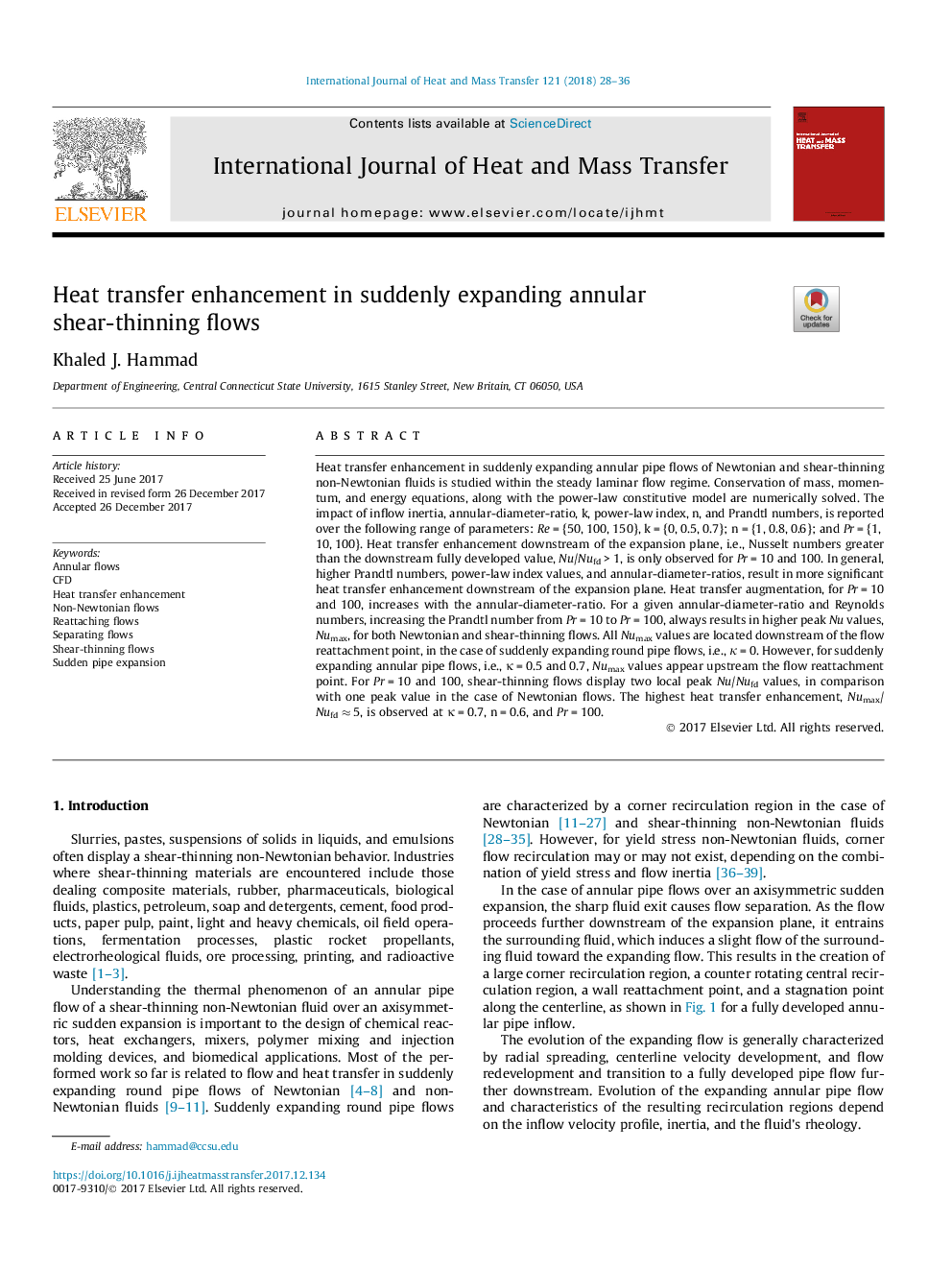| Article ID | Journal | Published Year | Pages | File Type |
|---|---|---|---|---|
| 7054420 | International Journal of Heat and Mass Transfer | 2018 | 9 Pages |
Abstract
Heat transfer enhancement in suddenly expanding annular pipe flows of Newtonian and shear-thinning non-Newtonian fluids is studied within the steady laminar flow regime. Conservation of mass, momentum, and energy equations, along with the power-law constitutive model are numerically solved. The impact of inflow inertia, annular-diameter-ratio, k, power-law index, n, and Prandtl numbers, is reported over the following range of parameters: Reâ¯=â¯{50,â¯100,â¯150}, kâ¯=â¯{0,â¯0.5,â¯0.7}; nâ¯=â¯{1,â¯0.8,â¯0.6}; and Prâ¯=â¯{1,â¯10,â¯100}. Heat transfer enhancement downstream of the expansion plane, i.e., Nusselt numbers greater than the downstream fully developed value, Nu/Nufdâ¯>â¯1, is only observed for Prâ¯=â¯10 and 100. In general, higher Prandtl numbers, power-law index values, and annular-diameter-ratios, result in more significant heat transfer enhancement downstream of the expansion plane. Heat transfer augmentation, for Prâ¯=â¯10 and 100, increases with the annular-diameter-ratio. For a given annular-diameter-ratio and Reynolds numbers, increasing the Prandtl number from Prâ¯=â¯10 to Prâ¯=â¯100, always results in higher peak Nu values, Numax, for both Newtonian and shear-thinning flows. All Numax values are located downstream of the flow reattachment point, in the case of suddenly expanding round pipe flows, i.e., κâ¯=â¯0. However, for suddenly expanding annular pipe flows, i.e., κâ¯=â¯0.5 and 0.7, Numax values appear upstream the flow reattachment point. For Prâ¯=â¯10 and 100, shear-thinning flows display two local peak Nu/Nufd values, in comparison with one peak value in the case of Newtonian flows. The highest heat transfer enhancement, Numax/Nufdâ¯ââ¯5, is observed at κâ¯=â¯0.7, nâ¯=â¯0.6, and Prâ¯=â¯100.
Related Topics
Physical Sciences and Engineering
Chemical Engineering
Fluid Flow and Transfer Processes
Authors
Khaled J. Hammad,
